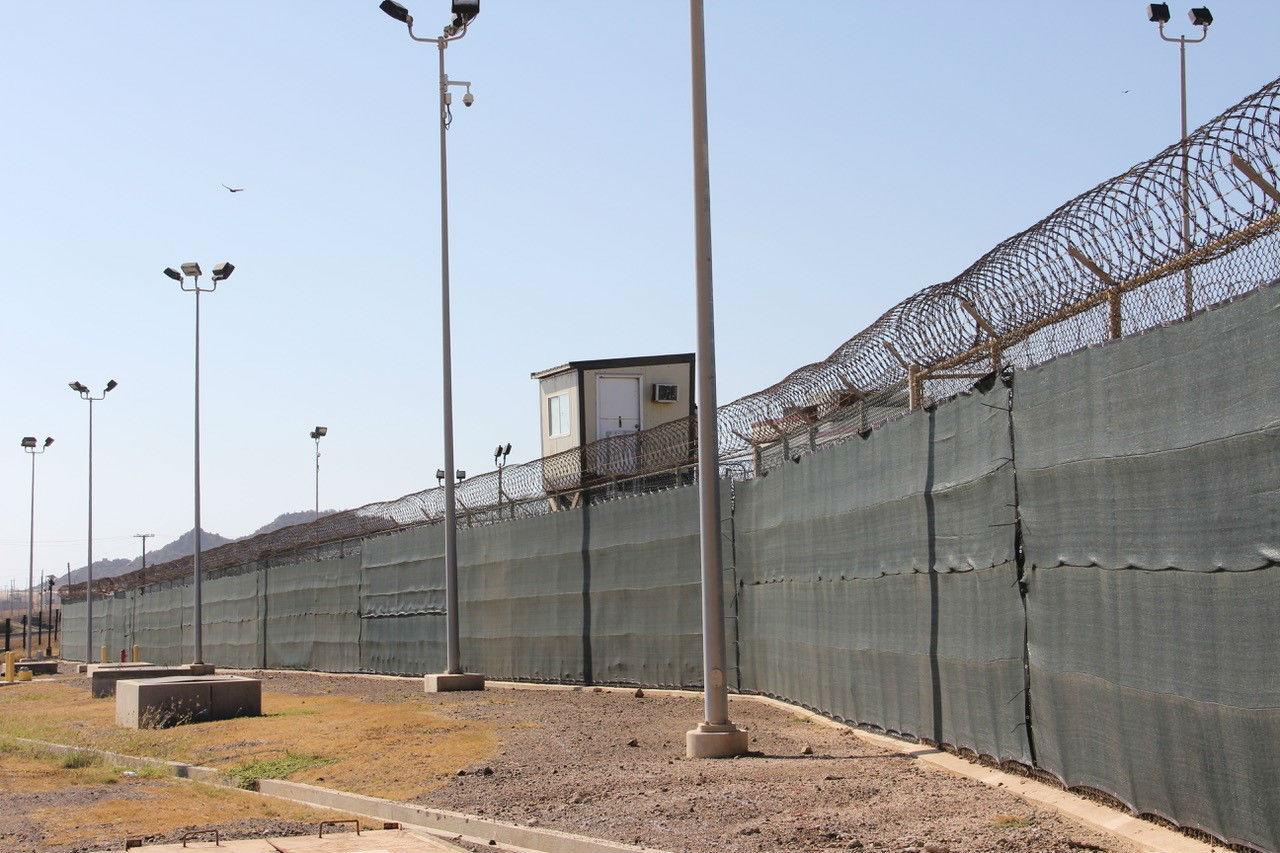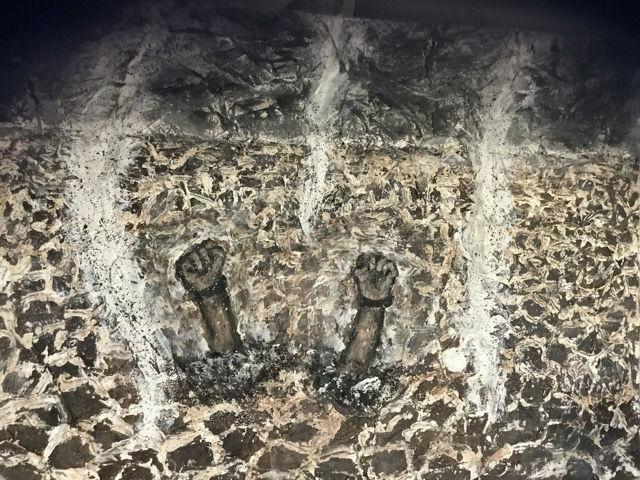Guantanamo Bay prisoners' lawyers urge Defence Secretary to end 'censorship' of inmate's artwork
Lawyers say art programme widely recognised to benefit inmates and guards alike

Lawyers for prisoners at Guantanamo Bay who have been refused permission to transfer artwork from the jail – some of it containing images of torture and abuse – have urged the US Defence Secretary to overturn a ban that activists claim amounts to “censorship”.
A number of the 41 prisoners still being held at the prison camp located at the US naval base in Cuba, often turn to art for relaxation. At the beginning of last year, the authorities there reportedly made it easier for prisoners to participate in drawing, painting and model-making.
But last November, after a number of works of art were displayed at a New York gallery, officials suspended all transfers of art. In addition, the inmates were told all their art was government property and would be destroyed if they were ever released from the prison.

Now, lawyers representing six prisoners at the camp have written to Defence Secretary James Mattis and Rear Adm Edward Cashman, the commander of the base, urging them to review the ban and saying it reflects badly on the military.
“Over the last decade, the detention camp administration itself has been the strongest proponent of the detainee art programme’s positive impact. Camp commanders and staff have extolled the facility’s most popular programme as “beneficial to everyone”,” they write.
They say the programme provides a creative outlet, keeps detainees’ minds occupied and is also good for the guard force. Guantanamo prison authorities have further acknowledged that art “provides intellectual stimulation” for the benefit of the individual, and contributes to the overall maintenance of “a peaceful environment”.
They add: “A decision to forbid any detainee art from being transferred out of Guantanamo would not reflect well on the Defence Department’s operations there.
“In fact, news of the policy review has already added fuel to criticisms regarding the lack of transparency of operations and lack of access to the detainees. Instead, the Defence Department should continue to embrace its art program at Guantanamo and the resulting detainee artwork shared outside the prison, and avoid any appearance of stifling it.”
The lawyers – Beth Jacob, counsel for Moath al-Alwi, Ahmed Rabbani and Omar al-Rammah, Ramzi Kassem, who also represents Moath al-Alwi, Shelby Sullivan-Bennis and Katherine Taylor of Reprieve, counsel for Haroon Gul and Khalid Qasim, and Pardiss Kebriaei and Aliya Hana Hussain, counsel for Sharqawi al-Hajj – said any plan to destroy work that had been produced by the inmates would also likely represent a breach of US copyright law.
They said the US Constitution’s Copyright Clause recognises that copyright protection is designed “to promote the progress of science and the useful arts”, which the Founding Fathers acknowledged serve an important public good.
The Pentagon stepped in after Erin Thompson, assistant Professor of Art Crime at the John Jay College of Criminal Justice, included several works in an exhibition of art relating to the attacks of 9/11.
“Art is supposed to be a window into the soul,” she said. She said the authorities were “shooting themselves in the foot” if they were ignoring the art works produced by the prisoners.
Clive Stafford Smith, the founder of the UK-based charity Reprieve, said one of their clients, Mr Rabbani, who says he is a Karachi taxi driver but whom the US authorities say was linked to al-Qaeda, was held for 545 days at the notorious Dark Prison, or Salt Pit, in Kabul.
The site was a clandestine CIA-operated “black site”, where Mr Rabbani was tortured and interrogated, something confirmed by the 2014 Senate Intelligence Committee report on CIA torture.
In testimony to his legal representatives, Mr Rabbani said he was subjected to a medieval form of torture, known to the Inquisition as the “strappado”. He showed his lawyers an image of the incident that he had drawn.
“They took me to a room and hung me by my hand to an iron shackle where my toes hardly touched the ground,” Mr Rabbani told his lawyers. “They removed the mask away from my face and left me hanging from one hand, naked, thirsty, and hungry.”
Mr Stafford-Smith said the authorities at Guantanamo did not allow him to take with him the image Mr Rabbani produced showing him being tortured. However, once he returned to the UK, he arranged for students to recreate it. “So much truth is hidden in Guantanamo Bay, including the long history of torturing people like Ahmed, who has never been charged with any crime, and is in my view guilty of none,” he said.
Cmdr Sarah Higgins, a Department of Defence spokesperson, said in a statement: “Detainee art classes at Guantanamo Bay continue to be held each week, and detainees have the opportunity to attend. Items produced by detainees at Guantanamo Bay remain the property of the US government.”
Join our commenting forum
Join thought-provoking conversations, follow other Independent readers and see their replies
Comments